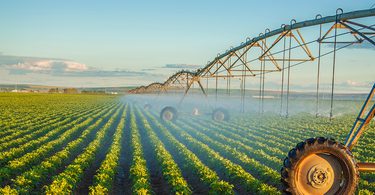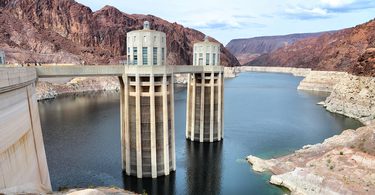
Redefining Our Water Future: Why Water?

Welcome to our new series on water where we will explore the issues around water today, the obstacles to and opportunities for investing in the sector and the technologies and policies that can help ensure water security and equity into the future. In this first installment, we set the stage by looking at the causes for and implications of water scarcity today.
There may be no resource more fundamental to our lives than water. In addition to the water we need to drink, bathe, wash our clothing and dishes or water the lawn, almost everything we interact with on a daily basis is produced with thousands of gallons of “hidden” water. For example, a burger packs in 660 gallons of water, about 2,000 gallons are consumed by one pair of jeans, 3,400 gallons are required to manufacture a smartphone and a car guzzles around 39,000 gallons on average.
As our economies have grown so has the global demand for water. In the last century the demand for water worldwide has increased twice as fast as the human population. Even though 71 percent of the earth’s surface is covered with water, less than 3 percent of that is freshwater, most of which is trapped in glaciers, ice caps or deep aquifers. And while demand increases, climate change is depleting our supplies of freshwater due to reduced water availability, contamination of water supplies and damage to infrastructure. In fact, UN experts project a 20 percent drop in renewable water resources for every 1 degree Celsius increase in global average temperature.
Our two main sources of freshwater are surface water, which includes streams, lakes and wetlands, and groundwater, which is found in aquifers underground. The majority of our surface water is divided among 410 named basins, regions where all the water that flows through them ends up at a single source. Of these 410 basins, almost a quarter are considered high stress, meaning the ratio of withdrawals to available supply exceeds 40 percent. About half of these are located in the US, China and India; countries with high economic activity and enormous water needs. Unfortunately, our groundwater prognosis is not any better. According to 14 years worth of satellite data collected by NASA, over half of the world’s major aquifers are past sustainability tipping points, meaning the rates at which groundwater is being withdrawn are far greater than replenishment rates. As a result of the depletion of these water sources, the UN predicts that by 2030 demand for water will outstrip supply by 40 percent.

While there is no industry that is impervious to water issues, one sector may be more susceptible than the rest. Agriculture is both a major culprit and casualty of water scarcity. Farming accounts for almost 70 percent of all water withdrawals and up to 95 percent in some developing countries. Such a dependence on water means that shortages can have drastic consequences. The 2021 drought directly cost the California agriculture sector about $1.1 billion and nearly 8,750 jobs. According to a recent study in the AGU journal of Earth’s Future, water shortages are expected to increase in more than 80 percent of the world’s croplands by 2050. Because of this, Barclay’s identified water scarcity as “the most important environmental concern” for the global consumer staples sector, which includes all things food, beverages and agriculture more generally and faces a $200 billion impact from water scarcity. Proactively addressing the issue of water management in the sector would cost the global consumer staples sector $11 billion, making the cost of inaction 18 times greater than the cost of action.
Unfortunately, the vulnerabilities that result from water shortages do not stop at food production. Many of the impacts of water scarcity and the ensuing declines in food production are far reaching and cascading, affecting the global flows of food and people. Economic activity is intimately tied to water scarcity. According to World Bank estimates, by 2050 water scarcity in some regions could impact GDP growth by up to 11.5 percent. Some of the key social concerns with water scarcity are displacement and war. The UN predicts that without interventions, water scarcity will displace hundreds of millions of people by 2030.
We have already seen how drought can spark social conflict, one of the starkest examples being the 2010 wildfires and drought that decimated Russian crops resulting in a spike in commodities prices and food riots in Egypt and Tunisia, kicking off the Arab Spring. In India’s northern plains, one of the most fertile farming regions in the world, there are regular clashes among villagers over water shortages and access.

Energy production is also vulnerable to water availability. Lake Mead and Lake Powell, the two largest reservoirs in the US that supply water and electricity to millions of people in the West, are in danger of reaching dead pool status. This means that water levels get so low that water can no longer flow downstream and power hydroelectric stations, eliminating energy generation.
The importance of water to the fabric of our lives means water resource management will be one of the greatest challenges of the 21st century. Addressing water issues will require unprecedented collaboration between governments, businesses, investors and civil society. But historically, water has not garnered the attention of private investors and corporate action has been less publicly visible than commitments to reduce greenhouse gas emissions and energy use. To effectively address our water future, we need significant public and private investments in technology, infrastructure, and drought management capabilities, changes in water use and management by businesses across industries, and policies that support water conservation and sustainable, equitable water access.
At S2G Ventures, we recognize that the future of water availability and the cascading second and third-order consequences of water shortages will impact our focus sectors, from food and agriculture to oceans and energy. This series will look at the barriers to and opportunities for the investment community to address water scarcity, how companies can evaluate and minimize water risk, and the policies, funding opportunities, and technologies that can improve water outcomes. There will be a focus on agriculture since it is the biggest water user, but with an eye to the fact that all sectors stand to be impacted. Our hope is that through these conversations, we can help envision the opportunities and facilitate the cross-sector partnerships needed to ensure an equitable and resilient water-secure future.


